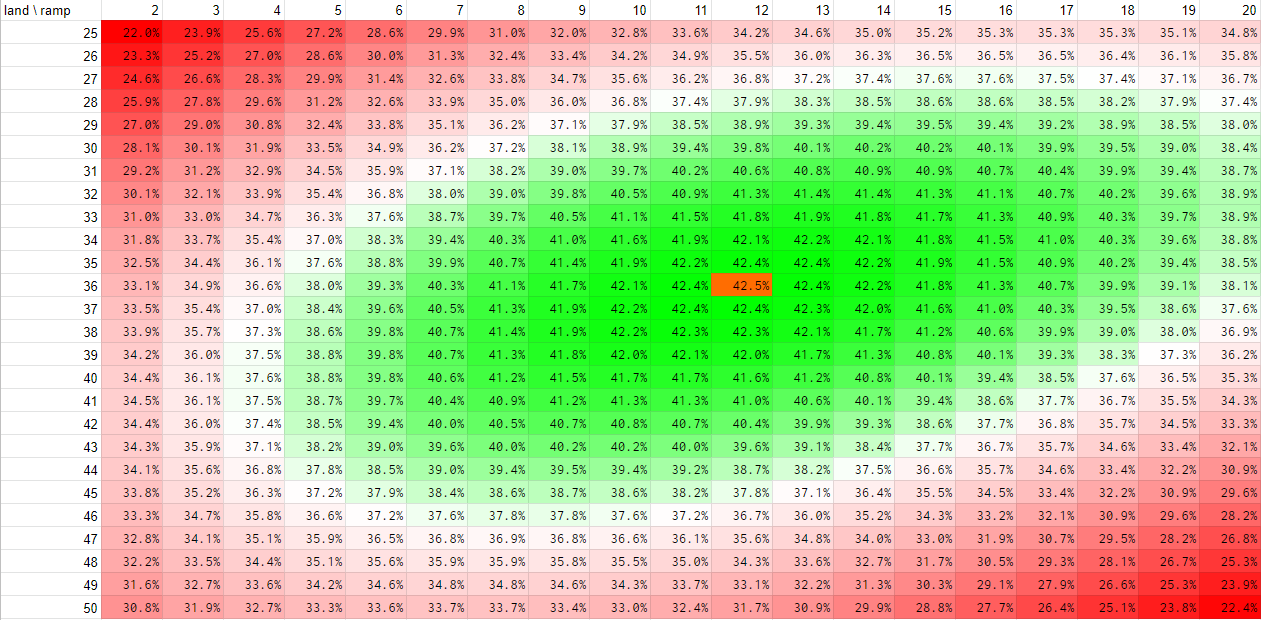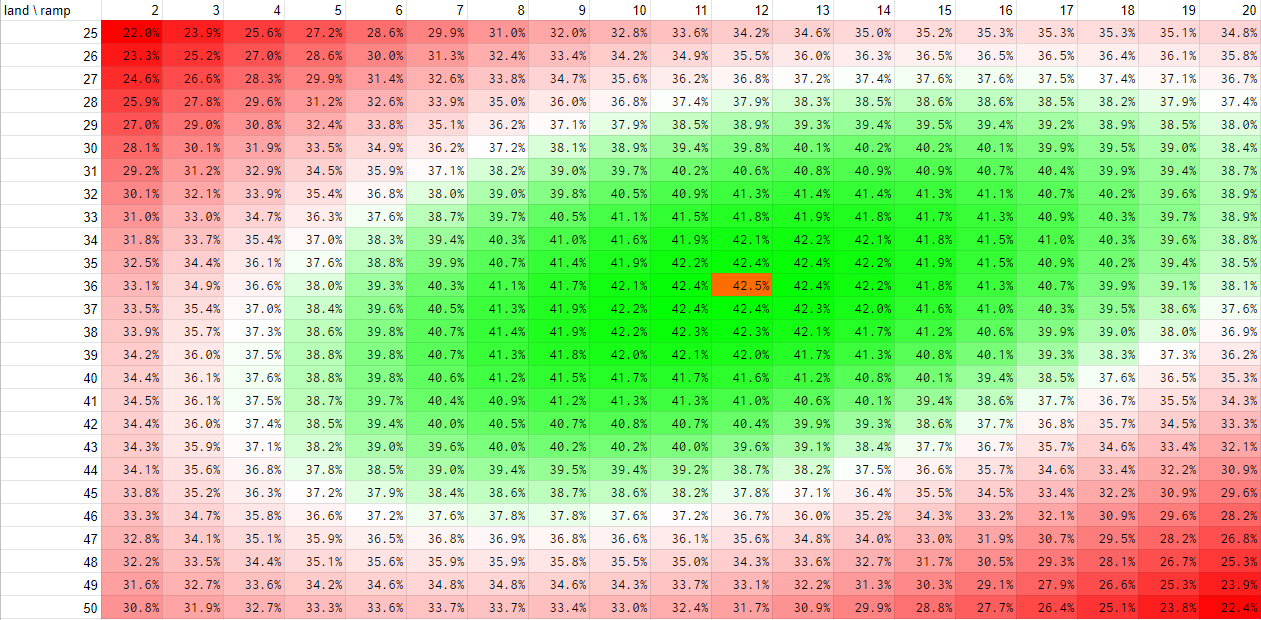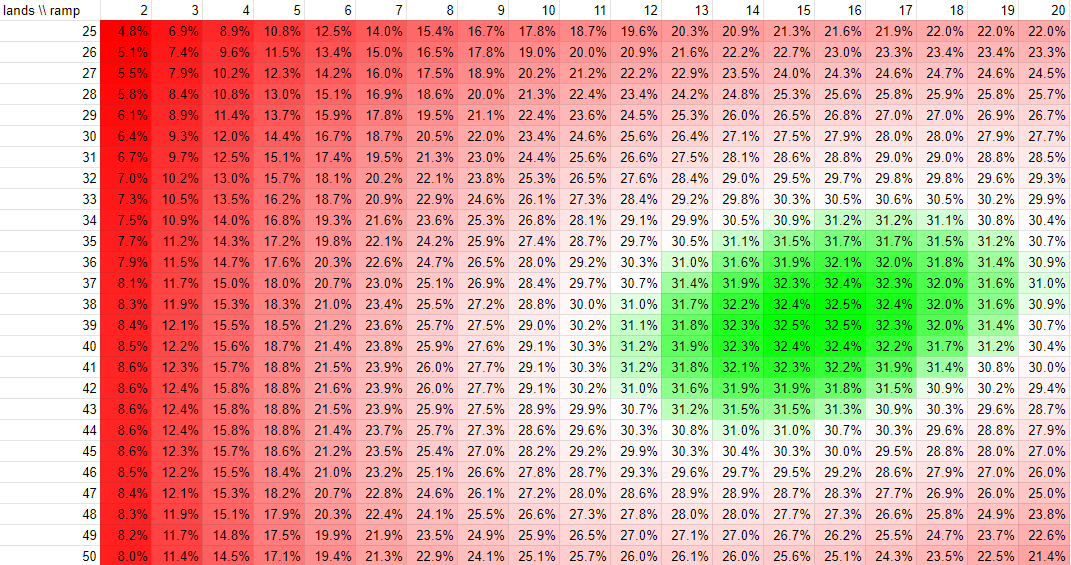this post was submitted on 08 Jul 2023
9 points (100.0% liked)
Commander
351 readers
1 users here now
Commander format discussion
Also called EDH or Elder Dragon Highlander, Commander is Magic's most popular format and all about picking your hero and building a deck around them. In this casual, multiplayer format, you choose a legendary creature to serve as your commander and build the rest of your 100 card deck around their color identity and unique abilities. Players are only allowed one of each card in their deck, with the exception of basic lands, but they can use cards from throughout Magic's history.
Commander combines the command zone, color identity, singleton deckbuilding, multiplayer strategies, and the entire MtG cardpool for one of the most exciting and fresh ways to play.
Read more at Commander's official website.
founded 1 year ago
MODERATORS
you are viewing a single comment's thread
view the rest of the comments
view the rest of the comments

SECOND POST:
My commander costs 4 mana. How many lands and ramp spells do I need to get it out on turn 3? TL;DR: 37 lands and 15 ramp spells at mana value 2 or less.
This short analysis is a continuation to "I'll just cut a land": A statistical analysis of lands and ramp in EDH article that was published 7 months ago. Also provocative title: I'm not saying this is the absolute truth but I'm putting forth the idea that every deck does need enough mana sources to play the game. This article discusses 4 mana commanders being cast ahead of curve.
I was building a new deck, helmed by Rosheen Meanderer (scryfall). The thing about Rosheen X-creatures is that I need Rosheen out as soon as possible (turn 3 or earlier). My prior advice was 36 lands and 12 ramp spells (see the other Reddit article) but I was left wondering if that's enough to get Rosheen out on turn 3. Answer: it's not.
This time I used a bit more complicated method of simulating the game to turn 2 assuming we're not playing any draw/loot/filter/rummage spells in the first two turns (which is true for my deck). The "simulation" here is simply to see a decent hand and hope our next two draws are good.
Why turn 2? If you play a Rampant Growth on turn 2 you can still cast your 4-mana commander on turn 3. If your 3rd draw is a Rampant Growth, however, it doesn't help you at all. Thus we need to cast all our ramp spells by turn 2. This also incidentally means that your ramp at mana value 3 or above doesn't help you cast your commander at all so you shouldn't count those towards ramp in your deck when it comes to this analysis. Cultivate is a decent card but exclude it this time.
The math is based on opening hands. Here's a table of hands and early draws I deemed acceptable:
opening 7 lands opening 7 ramp first 2 draws lands first 2 draws ramp 2 1 1 or 2 0 or 1 2 2 1 or 2 0 3 0 0 or 1 1 or 2 3 1 0 or 1 0 or 1 3 2 0 or 1 0 4 0 0 1 or 2 4 1 0 0 or 1 The philosophy here was that I draw a relatively safe hand and taking the two draws into account we're looking at 4 mana on turn 3. In other words that's our "mana target". There may also be a surplus left over since drawing into 4 lands is not necessarily a bad thing looking into the future. Looking at a 5 land opener can be a good thing but if there's a ramp spell in it it means we've only got one more spells that we can play (7-5-1=1). Doesn't sound nice to me. But in general I don't mind an extra land or ramp spell to be cast on turn 4. Feel free to disagree with my "safe" openers.
Obviously we can't know the future draws so they only act as "weight factors" for each hand. If you draw into a land rich hand with no ramp you absolutely need that one ramp spell. While we're optimising for a land rich hand by including it in the table we also take into account the fact that there must be a ramp spell in the next two cards which in turn increases the number of ramp spells needed in the deck so they kind of counteract each other.
Think of it this way: 3 lands and 1 ramp is a very, very safe hand. If it can accept any outcome from future draws it's the "best" opener possible. It gets a weight of 1 because the probability of drawing any (follow-up) card from your deck is always 1. If your hand is 2 lands and 1 ramp spell your hand must draw an extra land to survive - draws with no lands are bad so we exclude them and thus lower the weight of the hand in terms of overall optimisation. This way the math prefers the safest hands and gives them a higher priority.
Here's a cool heat map. Look at it. It's amazing. This heat map describes the probability of drawing a good opener and then having two favourable draws on turns 1 and 2. Each cell simply means "probability of happy times". From it you can see that the optimum is 38 lands and 16 ramp spells but the probability doesn't decrease significantly if you go to 37 lands and 15 ramp spells (hence the title of the post). This is surprising because the old adage is that your deck should have about 36 lands and 10 ramp spells in it for a total of 46 mana sources (my recommandation in the previous article was 36 and 12 for a total of 48). While it's close to that you may want to look at your deck critically and think if you need more than 50 sources. If you don't care about casting your commander on turn 3 then go with something lower. The "midpoint" of the colour scale is set to 85th percentile, by the way. So roughly green is good.
In more detail: each cell takes the probability of finding a particular kind of opener (outlined in the table above) and then multiplies that (the AND condition in probabilities) by the probabilities of good outcomes and then adds all the hands together (the OR condition in probabilities) to produce a single probability table. Each cell has a bunch of multivariate hypergeometric functions (not the simple kind) - it's a bit cumbersome so if you want more details about this you must contact me directly.
Fun fact: the table contains 11250 calculations where each calculcation has a number that is in the ballpark of 10 billion (American notation; 1010 for the more scientific minded people). It takes a few minutes to render the entire table.
Thank you for reading, hope this helps you somehow! Always take a stranger's word with a pinch of salt and feel free to disagree in the comments.
Images:
No mulligans, general advice (first post):
Three mulligans, general advice (first post):
Accepting 4 land hands, general advice (first post):
4-mana commander (second post):
Wow that's a thorough analysis ! Thanks a lot. It does cover a blind spot of the article, which is that it is based on what people are doing instead of what they should do. I will experiment with your model !
15 cheap ramp spells feels like a tall order if you don't run green though, especially if you don't have the budget for mana crypt/mana vault/moxes. EDIT : there are more mana rocks than I previously thought, even on a budget. See this scryfall search.
Do you have an idea of how fast the output of your model changes when the average cmc of the deck changes ?
Crap, I wrote a long comment and accidentally closed the tab. Well.
In a nutshell: 15 ramp spells is doable. There are already 15 colourless rocks to fulfill this order.
So the analysis above doesn't take average mana value into account. It simply looks at the (subjectively) acceptable starting hands and goes from there. You can indirectly manipulate the assumed average mana value by modifying which hands to accept and which to mulligan.
I have experimented with a variable MV setup... But the results are pretty wild. I'll return to you if I ever get around to doing some more of that. (Yeah, that's going to be tonight lol.)